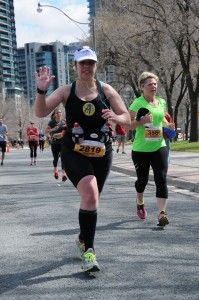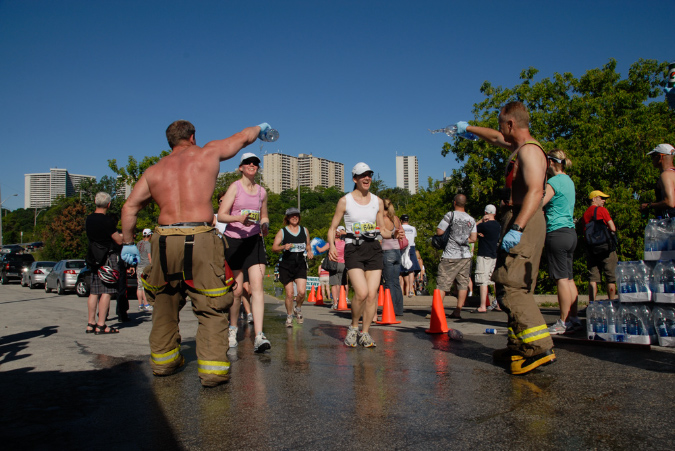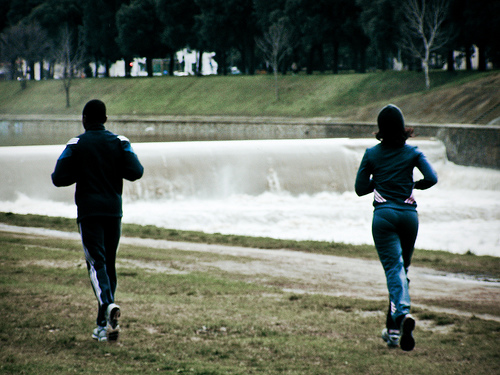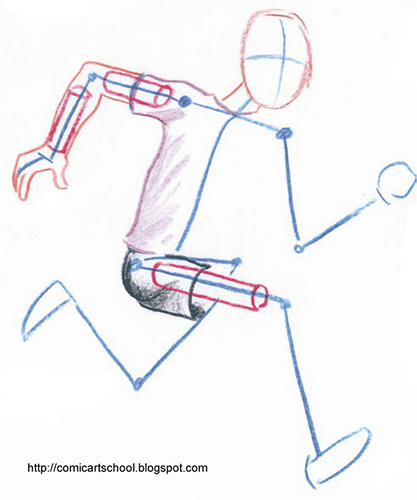I had such high hopes when I signed up for the Goodlife Toronto half-marathon. I spoke to a number of people who had run it beforehand, and for the most part, reviews were good.
It’ll be easy, they said. It’s all downhill, they said.
All righty, then. It sounded like just the race to kick off my season after a brutal winter of spotty training, mostly done on the treadmill. Maybe I would even be able to pull off a personal best.
For about a week leading up to the race, I was fighting a cold and dealing with seasonal allergies. I was popping Cold FX pills twice a day and drinking orange juice as if it was about to go extinct. I willed my body to hold off on getting sick, and it seemed to work.
And then, on the morning of the race, I woke up feeling as if a steamroller had driven through my head. I felt so congested that for a few moments, I debated with myself whether I should run the race. I talked myself into going. All symptoms were above the neck, so it was, according to the experts, safe for me to run. Besides, I had trained for this race, and come hell or high water, I was going to run it.
For the sake of my sanity, I tend to divide half-marathons into thirds. That way, instead of running 21K, I’m running three blocks of 7K each. 7 is an easier number to work with than 21, especially when your feet feel as if they’re going to fall off.
The first 7K went really well. I was tracking above my target pace, but that’s mostly because the biggest downhill sections were early in the race, and that lulled me into a pace that was, in retrospect, far too aggressive. That was even taking into account a nasty uphill section in the fourth or fifth kilometre.
Things started to get a little rough during the second 7K, but I wasn’t too concerned. I figured that I had just gone out too fast, and that all I needed to do was adjust my pace and I’d be OK. But instead of getting better, I started feeling worse. In spite of the wind, my body was starting to feel uncomfortably warm.
During the final 7K, the wheels completely fell off. I realized that I probably should have been hydrating more than usual because of my cold, and that my body was screaming for more fluids. I dehydrated to the point where I stopped sweating because my body just had no fluid to make sweat with. I got through about 3K by counting my steps. I was setting myself little challenges and giving myself rewards.
If you run for 40 steps, you can walk for 20.
If you run until the end of this song, you can walk for 100m.
Those few kilometres were excruciating. I stopped caring about what my finish time would be. All I wanted to do was push forward so I could get to the finish line. I wanted to be allowed to stop running.
With 3K to go, I stopped completely. I drank several ounces of water, followed by some Gatorade and then some more water. Usually I hydrate in sips. This time, I gave myself a downpour. I reset the shuffle on my music player, dug deeper than I’ve ever had to dig before, and I started running in the direction of the finish line.
My running wasn’t fast. My running wasn’t pretty, or efficient. My form was so bad that it could have been used in a textbook picture of “how not to run”.
But I ran. I focused on the music playing in my ears, and I ran. I smiled grimaced at the well-meaning spectators who were telling me how great I looked (I looked like crap, but it was nice of them to say so), and I ran. I thought about the finish line, the weight of a finisher’s medal around my neck, and the feeling of accomplishment that I would feel, and I ran.
After about four geological eras, I crossed the finish line. My usual finish line kick didn’t happen, and I barely had the strength for my finish line fist pump. But I had done it and I had the finisher’s medal around my neck to prove it. And my time – 2:23:01 – was not bad considering the circumstances. I’d actually been expecting a lot worse.
For the last five days, I’ve been nursing my aching legs and my bruised ego. I’ve suffered from self-doubt: if I had this much of a hard time during what was supposed to be an easy half-marathon, how will I manage 30K in August? But now I feel that I’m ready to move on. We can’t always have the race we want, and sometimes we have to have bad races in order to get stronger.
I am ready to lace up the running shoes again, to hit the road and get training again. And that 30K race in August? I’m planning to eat it for breakfast.
This is an original post by Kirsten Doyle. Photo credit: www.marathonfoto.com.













